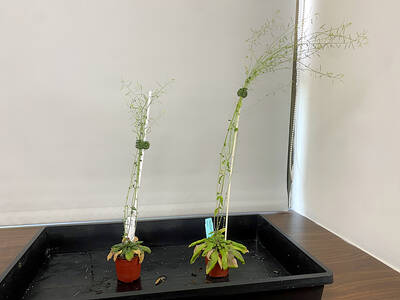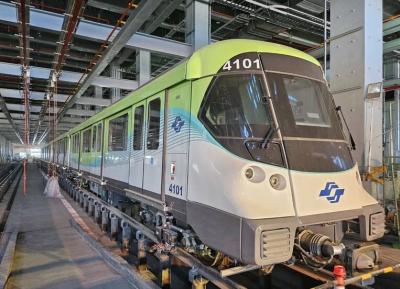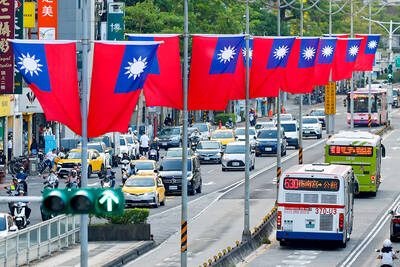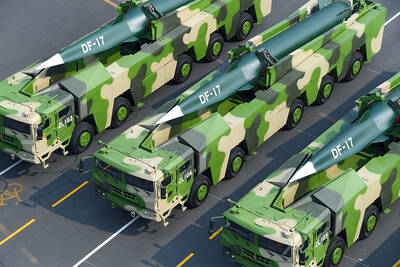Taiwan should seek to collaborate with US forces in the Pacific on medical assistance and humanitarian aid, with the eventual aim of strengthening military cooperation, an international affairs researcher said on Friday.
The US Senate on Thursday passed its version of the US National Defense Authorization Act (NDAA) for next year, which includes stipulations regarding its military commitment toward Taiwan.
Some of those stipulations include improving cooperation on military medical affairs and humanitarian assistance, as well as potentially inviting Taiwan to participate in the Rim of the Pacific Exercise (RIMPAC), the world’s largest maritime warfare exercise, if appropriate.
In the short term, Taiwan is unlikely to participate in RIMPAC, but the two countries could first cooperate on medical assistance and humanitarian aid in the South China Sea, National Chung Cheng University Graduate Institute of Strategy and International Affairs director Soong Hseik-wen (宋學文) said.
Such cooperation would also strengthen Taiwan’s defense of Itu Aba Island (Taiping Island, 太平島) and the Pratas Islands (Dongsha Islands, 東沙群島), he said.
Taiwan would remain open to military cooperation, but the issue would largely be decided by the US, Democratic Progressive Party Legislator Lo Chih-cheng (羅致政) said.
However, there would be many steps before joint military exercises could take place, Lo said, adding that he hoped the US would first put the Taiwan Travel Act to use, and increase the frequency and extent of military exchanges.
Chen Kuo-ming (陳國銘), senior editor of the Taiwan-based magazine Defence International, said in an article that while it would be too late for Taiwan to participate in RIMPAC this year, it could ask that military officials be given permission to observe the exercises from the deck of a US warship.
Current military exchanges between the two countries include the US training of military instructors from the Republic of China Army Airborne Special Forces, humanitarian aid exchanges and the training of Taiwanese F-16 pilots at Luke Air Force Base in Arizona, Chen said, adding that US military officials also regularly observe the annual Han Kuang exercises in Taiwan.
There is a possibility that China would engage the US military to distract from domestic issues, including the COVID-19 pandemic, unrest in Hong Kong and the economic impact of the ongoing US-China trade conflict, Soong said.
China might take advantage of the typhoon season next month and in September as a pretense for landing on Itu Aba or the Pratas Islands, which would lead to an armed conflict, he said, adding that such a scenario could be avoided if Taiwan and the US were working together near the islands on medical or humanitarian work.
Taiwan should seek to build on mutual values and interests in its cooperation with the US, such as sending naval or coast guard ships to protect merchant vessels, Institute of National Defense and Security Research senior analyst Su Tzu-yun (蘇紫雲) said.
Taiwan should bolster its reserve forces to show its resolve in defending itself, he added.

Taiwanese scientists have engineered plants that can capture about 50 percent more carbon dioxide and produce more than twice as many seeds as unmodified plants, a breakthrough they hope could one day help mitigate global warming and grow more food staples such as rice. If applied to major food crops, the new system could cut carbon emissions and raise yields “without additional equipment or labor costs,” Academia Sinica researcher and lead author the study Lu Kuan-jen (呂冠箴) said. Academia Sinica president James Liao (廖俊智) said that as humans emit 9.6 billion tonnes of carbon dioxide compared with the 220 billion tonnes absorbed

The Taipei Mass Rapid Transit (MRT) Wanda-Zhonghe Line is 81.7 percent complete, with public opening targeted for the end of 2027, New Taipei City Mayor Hou You-yi (侯友宜) said today. Surrounding roads are to be open to the public by the end of next year, Hou said during an inspection of construction progress. The 9.5km line, featuring nine underground stations and one depot, is expected to connect Chiang Kai-shek Memorial Hall Station to Chukuang Station in New Taipei City’s Jhonghe District (中和). All 18 tunnels for the line are complete, while the main structures of the stations and depot are mostly finished, he

Taipei is to implement widespread road closures around Taipei 101 on Friday to make way for large crowds during the Double Ten National Day celebration, the Taipei Department of Transportation said. A four-minute fireworks display is to be launched from the skyscraper, along with a performance by 500 drones flying in formation above the nearby Nanshan A21 site, starting at 10pm. Vehicle restrictions would occur in phases, they said. From 5pm to 9pm, inner lanes of Songshou Road between Taipei City Hall and Taipei 101 are to be closed, with only the outer lanes remaining open. Between 9pm and 9:40pm, the section is

China’s plan to deploy a new hypersonic ballistic missile at a Chinese People’s Liberation Army Rocket Force (PLARF) base near Taiwan likely targets US airbases and ships in the western Pacific, but it would also present new threats to Taiwan, defense experts said. The New York Times — citing a US Department of Defense report from last year on China’s military power — on Monday reported in an article titled “The missiles threatening Taiwan” that China has stockpiled 3,500 missiles, 1.5 times more than four years earlier. Although it is unclear how many of those missiles were targeting Taiwan, the newspaper reported